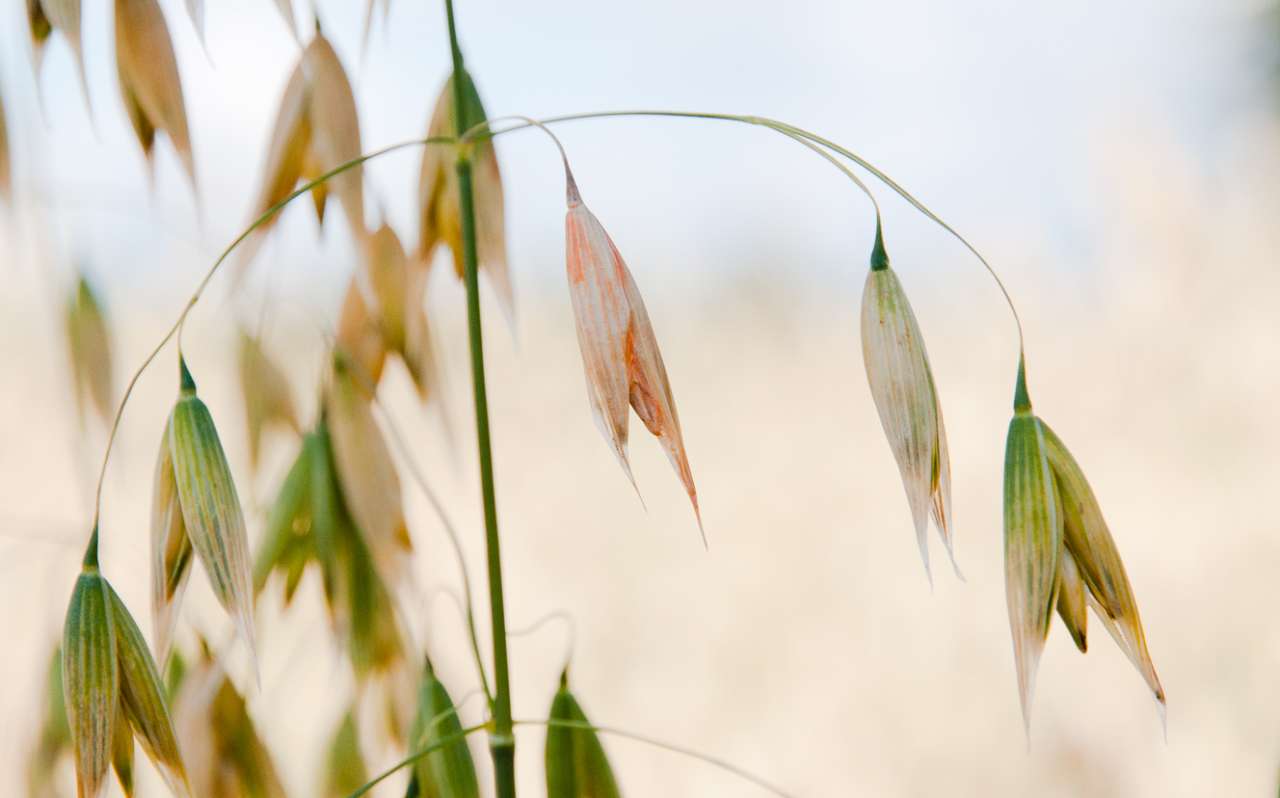Divisjon for bioteknologi og plantehelse
Kunnskap om faktorer som påvirker utvikling av sopp og soppgifter

Slutt: des 2027
Start: jan 2024
Prosjektet skal identifisere faktorer som påvirker innhold av soppgifter eller andre naturlig dannede uønskede stoffer i planter, og utvikle kunnskap som kan bidra til å redusere forekomsten av slike gifter.
| Status | Pågående |
| Start- og sluttdato | 01.01.2024 - 31.12.2027 |
| Prosjektleder | Ingerd Skow Hofgaard |
| Divisjon | Divisjon for bioteknologi og plantehelse |
| Avdeling | Soppsjukdommer i skog-, jord- og hagebruk |
Enkelte plantepatogene sopparter som er vanlig forekommende i Norge kan produsere soppgifter (mykotoksiner). Mykotoksinene er giftige for mennesker og dyr og utgjør dermed en trussel for mat- og fôrtrygghet. Fusarium er en soppslekt med flere ulike arter. Noen av disse kan forårsake sjukdom i korn. Fusarium- angrep i korn kan blant annet medføre redusert avling. En langt mer alvorlig effekt av et slikt sopp- angrep er utvikling av mykotoksiner i kornet.
Det forekommer en rekke ulike Fusarium-arter og mykotoksiner i norsk korn. Enkelte år har det vært særlig høye forekomster av sopparten Fusarium graminearum og mykotoksinet deoksynivalenol (DON) i norsk korn. I de seinere åra har vi også hatt fokus på forekomst av Fusarium langsethiae og mykotoksinene HT2 og T2 i norskprodusert havre. Disse toksinene er langt giftigere enn DON.
Det er viktig å kartlegge forekomst av Fusarium og mykotoksiner i norske kornsorter slik at en kan identifisere, og dermed dyrke, de sortene som har høy grad av resistens mot Fusarium og dermed lavere risiko for utvikling av mykotoksiner.
Økt dyrking av moderat resistente sorter kombinert med redusert dyrking av mottakelige sorter bidrar til å redusere smittepresset og dermed redusere risikoen for mykotoksiner i Norsk korn, noe som bidrar til trygg mat og trygt fôr i Norge. Det er behov for økt kunnskap om faktorer som påvirker forekomst av Fusarium og mykotoksiner i korn, slik at aktuelle tiltak eventuelt kan iverksettes for å sikre en høy grad av mat- og fôrtrygghet i Norge.
Nok såkorn av god kvalitet fra sorter som kan dyrkes i Norge er en forutsetning for norsk korndyrking og dermed for nasjonal matsikkerhet. Angrep av enkelte Fusarium-sopper på såkorn og utvikling av mykotoksiner fører til redusert spireevne og i vanskelige år har dette ført til mangel på norsk såkorn. I tillegg vil Fusarium-infisert såkorn være en smittekilde for spredning av mykotoksin-produserende sopper i kornåkre, og dermed være en risiko for mattrygghet. For å unngå bruk av såkornpartier med uønsket Fusarium-smitte og å ta beslutning om brukbarhet av såkorn, er det nødvendig med presis analyse av hvilke Fusarium- og Microdochium-arter som er til stede i ulike såkornpartier. Dette har også betydning i forbindelse med såkornberedskap.
I tildelingsbrevet fra Landbruks- og matdepartementet til Norsk institutt for bioøkonomi (NIBIO) for 2020, heter det under avsnittet om «Beredskap, plantehelse og mattrygghet» at NIBIO skal «kunne identifisere faktorer som påvirker innhold av soppgifter eller andre naturlig dannede uønskede stoffer, og utvikle kunnskap som kan bidra til å redusere forekomsten av slike gifter». Prosjektet finansieres via midler fra LMD og har fokus på problemstillinger innen ovennevnte tema.
Publikasjoner i prosjektet
Sammendrag
Det er ikke registrert sammendrag
Forfattere
Anne-Grete Roer Hjelkrem Heidi Udnes Aamot Morten Lillemo Espen Sannes Sørensen Guro Brodal Aina Lundon Russenes Simon G. Edwards Ingerd Skow HofgaardSammendrag
Det er ikke registrert sammendrag
Sammendrag
Det er ikke registrert sammendrag
Forfattere
Anne-Grete Roer Hjelkrem Heidi Udnes Aamot Guro Brodal Einar Strand Torfinn Torp Simon G. Edwards Ruth Dill-Macky Ingerd Skow HofgaardSammendrag
Det er ikke registrert sammendrag
Forfattere
Ingerd Skow HofgaardSammendrag
Det er ikke registrert sammendrag
Sammendrag
Det er ikke registrert sammendrag
Sammendrag
Det er ikke registrert sammendrag
Sammendrag
Det er ikke registrert sammendrag
Sammendrag
Det er ikke registrert sammendrag
Forfattere
Ingerd Skow Hofgaard Till Seehusen Heidi Udnes Aamot Jafar Razzaghian Vinh Hong Le Hugh Riley Børge Holen Elisa Gauslaa Hege Særvold Steen Anne-Grete Roer Hjelkrem S.G. Edwards Ruth Dill-Macky Guro BrodalSammendrag
Det er ikke registrert sammendrag
Forfattere
Ingerd Skow Hofgaard Heidi Udnes Aamot Anne-Grete Roer Hjelkrem Mauritz Åssveen Einar Strand Guro BrodalSammendrag
Det er ikke registrert sammendrag
Forfattere
Ingerd Skow Hofgaard Heidi Udnes Aamot Anne-Grete Roer Hjelkrem Mauritz Åssveen Einar Strand Guro BrodalSammendrag
Det er ikke registrert sammendrag
Sammendrag
Det er ikke registrert sammendrag
Sammendrag
Det er ikke registrert sammendrag
Forfattere
Aksel Bernhoft Gunnar Sundstøl Eriksen Leif Sundheim Anne Lise Brantsæter Christiane Kruse Fæste Trond Rafoss Anne Marte Tronsmo Marc Berntsen Guro Brodal Ingerd Skow Hofgaard Tore Sivertsen Tor Øystein Fotland Tron Øystein Gifstad Edel Holene Elin Thingnæs Lid Inger Therese L. Lillegaard Marie Louise WiborgSammendrag
Det er ikke registrert sammendrag
